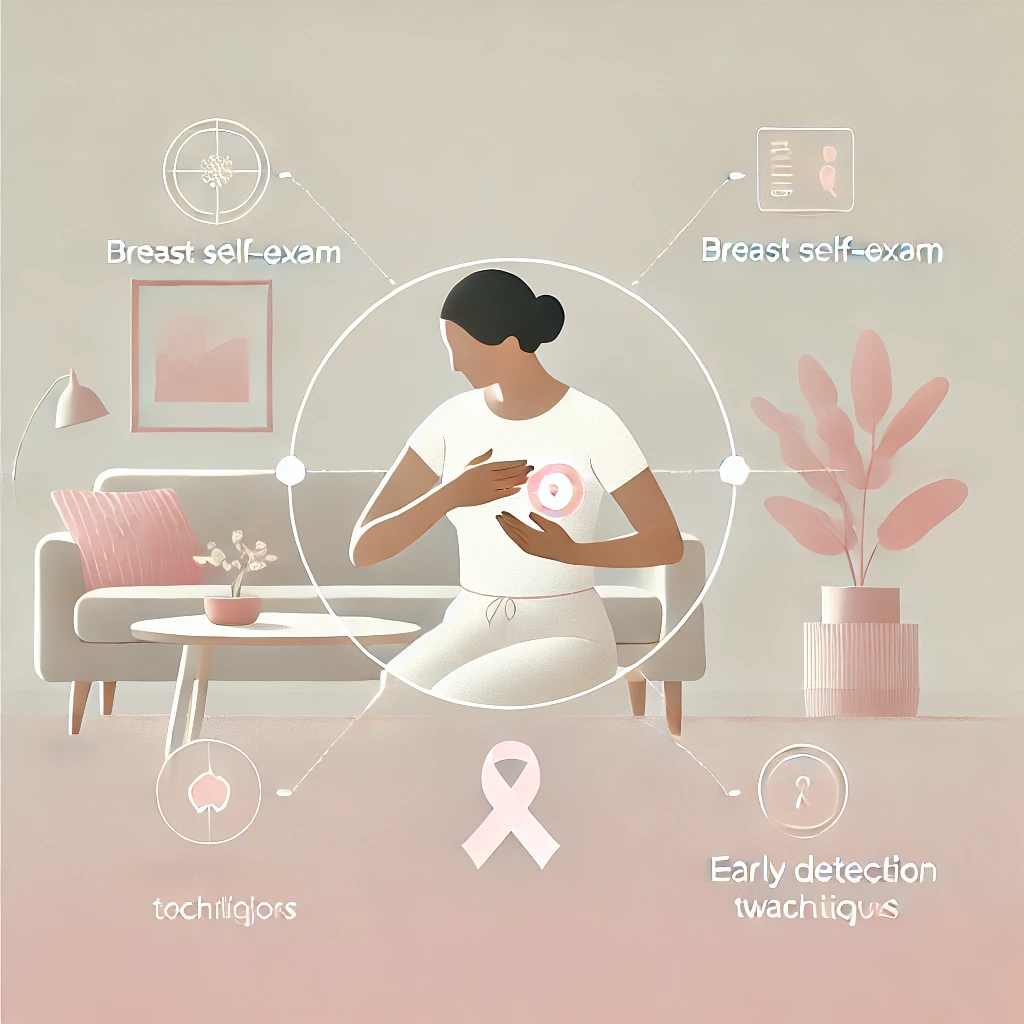Although early identification is still the greatest chance for effective treatment and survival, breast cancer is still one of the most frequent malignancies afflicting women worldwide. The breast self-examination (BSE), which is simple to learn, can be performed at home, and takes just a few minutes each month, is one of the most accessible early detection techniques. It offers a vital layer of understanding and familiarity with one’s own body that might save a life, but it cannot replace professional breast examinations and screenings like mammography or ultrasound.
This tutorial will explain the importance of breast self-examinations, how to conduct them correctly, and what to do if you see anything out of the ordinary. You can take charge of your health journey by doing one easy step.
The Significance of Breast Self-Examinations
Breast self-examinations provide a priceless advantage: personal knowledge, even if they cannot replace medical checks. The possibility that self-examinations might serve as an early warning system is highlighted by the fact that many women say that they discovered their breast cancer on their own. BSEs let women to identify any abnormalities early, allowing them to see a doctor before their symptoms worsen. Self-examinations round out a thorough approach to breast health monitoring when used in conjunction with routine professional examinations and mammography.
Breast self-examinations are particularly crucial in nations where access to screening services may be restricted or where cultural perceptions about medical examinations pose a barrier. Early detection by self-examinations may have a significant influence on results in places like Pakistan, especially in populations where screening methods may be less available or underutilised.
The Step-by-Step Guide to Breast Self-Examination
The three basic stages of a breast self-examination include seeing, feeling when laying down, and feeling while standing or sitting.
First Step: Visual Examination
Place your arms at your sides and stand in front of a mirror.
Examine the breasts for any changes in size, shape, or symmetry.
Keep an eye out for obvious symptoms such as swelling, puckering, dimpling, or changes in skin texture that can mimic the feel of an orange peel.
Look for any changes in the shape of your breasts by lifting your arms over your head. Keep an eye out for any odd nipple changes, including inversion or discharge, or swelling.
Palpation in Step Two When Lying Down
Place a cushion under your right shoulder while lying on your back. Your right arm should be behind your head.
Cover the whole breast region and armpit with the pads of your three middle fingers and apply light circular pressure.
To examine tissue at various depths, use gentle, medium, and hard pressure.
Make sure you cover the whole breast by moving in a systematic fashion, such as vertical rows or a circle from the outside breast to the nipple.
Step 3: Standing or Sitting and Palpating
This phase is often performed in the shower since many women think that it is easier to detect changes in breast tissue when their skin is damp and slick.
Feel your right breast with your left hand while raising your right arm and putting your hand behind your head.
Apply the same pressures, covering areas, and circular movements as when you’re laying down.
- Do the same with your other breast.
- Less than ten minutes should be needed for the whole test, making it a short but effective regular addition to your medical treatment.
- Things to Consider When Doing a Breast Self-Examination
- You should see a healthcare professional if you notice any of the following symptoms during your self-examination:
- swollen patches or lumps that don’t feel like the surrounding tissue.
- persistent soreness or discomfort in a particular area.
alterations to the breast’s size or form. - inexplicable nipple discharge, particularly if it’s transparent or bloody.
swelling around the collarbone or in the armpit. - A rash-like appearance, redness, or warmth are examples of unusual skin changes.
Even though a lot of these symptoms may not be cancer, they still need to be looked into further to rule out any major health problems.
When to Do a Self-Examination of the Breasts
Breasts are least likely to be swollen or sensitive a few days following your monthly cycle, thus it is advisable to do a breast self-examination once a month. To assist you remember, if you’re post-menopausal, choose a regular day every month. You may greatly increase your chances of receiving a successful treatment if cancer is discovered by monitoring your breast health on a regular basis and identifying any changes early.
Everyone Should Do a Breast Self-Examination
Although it is much less common, males may still get breast cancer. Similar self-examination methods may be used by men to look for anomalous lumps or changes in their breast tissue. Similar to women, any unexpected discovery should prompt a conversation with a medical professional.
Other Options for Screening
Despite its usefulness, breast self-examinations need to be a component of a more comprehensive breast cancer screening strategy. Ultrasounds and mammograms, particularly 3D imaging, might identify alterations that a self-examination would miss. A screening regimen might be suggested by your healthcare professional depending on your age, family history, and individual risk factors.
Take Action and Gain Knowledge to Empower Yourself
The breast self-examination is a commitment to self-awareness and preventative healthcare, not just a medical procedure. Early detection may be greatly improved by arming oneself with information and doing consistent, little actions. Self-examinations are one of the easiest and most powerful weapons you have in your arsenal to combat breast cancer, and early intervention significantly improves results.
We at [Your Company Name] are committed to raising awareness of health issues and offering a range of services, such as breast ultrasonography and other screening choices, to support your proactive lifestyle. Our goal is to empower you to take charge of your health journey by providing you with trustworthy resources and accurate information on breast health.
A few minutes a month might change your life. Prioritise the breast self-examination and don’t forget to see a doctor right away if you have any concerns. We can successfully combat breast cancer and advance early diagnosis by working together to raise awareness and take action.



